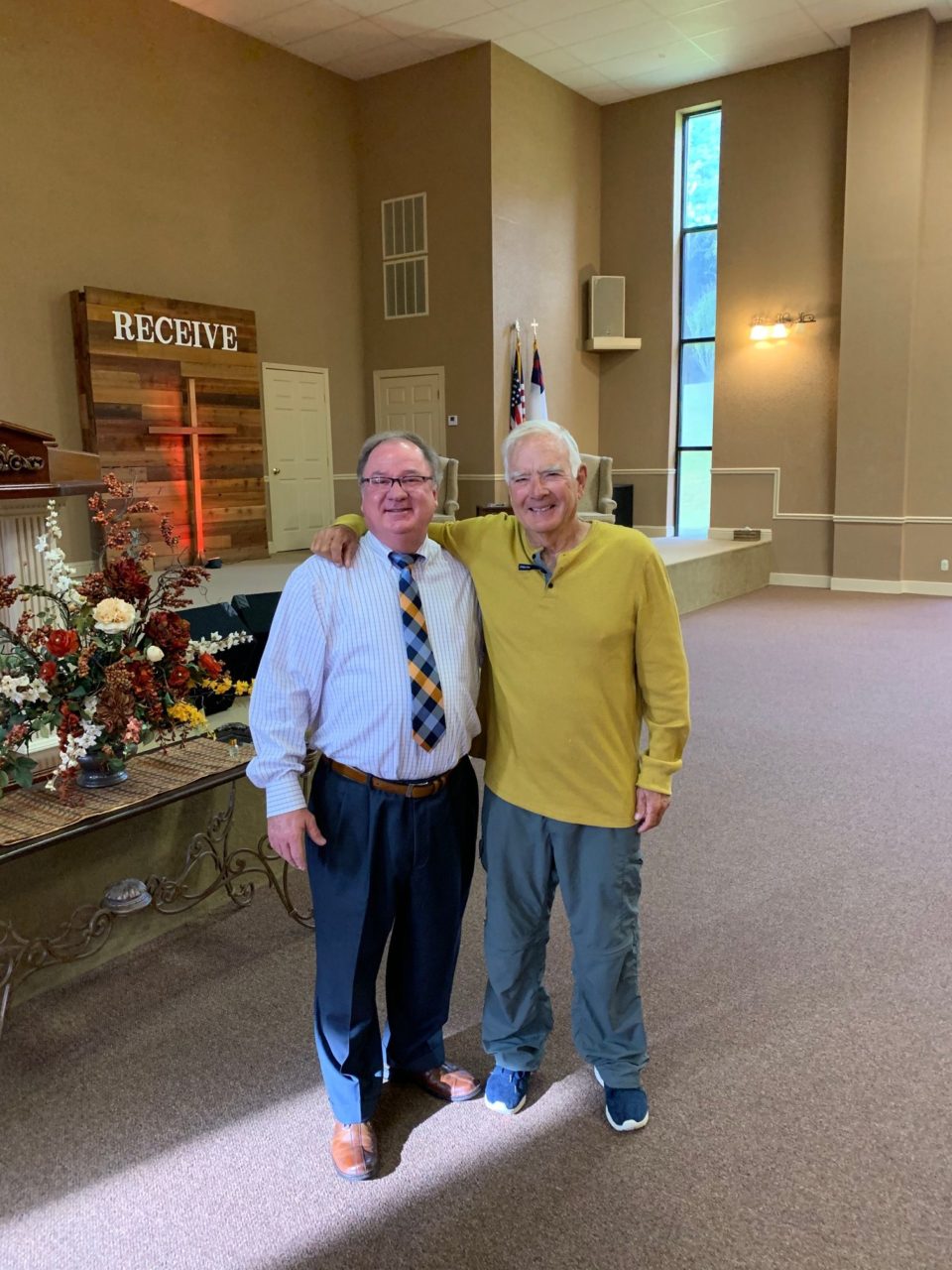Vicksburg, Mississippi
October 20, 2019
Dear Family & Friends:
In the Civil War, one of the Union military strategies was to take control of the entire Mississippi River, thus splitting the Confederacy in half and cutting off supply routes. In order to accomplish this goal, Vicksburg, Mississippi had to be captured.
Vicksburg sits on a high bluff overlooking the Mississippi River. At the beginning of the War, it was controlled by the Confederacy. This control allowed recruits and supplies to reach the Confederates via the River. President Lincoln described Vicksburg as the key to victory and stated “the war can never be brought to a close until that key is in our pocket.” He ordered General Ulysses S. Grant to take Vicksburg. The Vicksburg Campaign began in April of 1862 and ended in July of 1863.
Vicksburg was heavily fortified by the Confederate Army. In the final push to take Vicksburg, General Grant considered two options: an all out frontal attack and a siege. The siege option involved “out-camping” the Confederate Army by surrounding the City, cutting off recruits and supplies and starving the Army and the civilian population into submission.
General Grant chose the frontal attack. Several attempts were repulsed by the Confederates. Two famous battles were fought-one on May 19 and another on May 22. The Union Army was led by General Sherman. Both attempts to dislodge the Confederate soldiers from their fortifications failed.
On May 23, General Grant switched to the siege option. During the siege, Grant’s artillery hammered the Confederate fortifications while Admiral David Porter’s gunboats blasted the city from the River. The residents were forced to flee to caves to survive the carnage. Forty-seven days later, on July 4, 1863, Confederate General John Pemberton surrendered his army after his beleaguered troops and the civilians were reduced to eating cats, dogs and rats. They also suffered from illness, including dysentery and malaria. The surrender ended the largest and most complex campaign of the Civil War.
There were 20,000 casualties in the Vicksburg campaign. The casualty rate was 4-1 in favor of the Confederates. The Confederate Army had won the battles but lost the siege.
The surrender of Vicksburg was one day after General Robert E. Lee was defeated in the battle at Gettysburg. These two battles marked a turning point in the Civil War and led to the end of the War with General Lee’s surrender to General Grant at Appomattox Court House, Virginia on April 9, 1865.
On October 19, Jill and I toured Vicksburg National Military Park. Our guide was Ralph Stillions. This wonderful tour lasted three hours. This tour is a must-see if you visit Vicksburg. Be sure you hire a Park guide so you get all the fabulous back stories.
In the Anchuca restaurant, I met two really nice families. The Andrews family, who live in Louisiana, and the Biedenharn family, who live in several states. I’m hoping to spend the night with Ron, Sharon and Sarah Andrews during my next stop downstream. The Biedenharn family are related to Joe Biedenharn, who was the first bottler of Coca-Cola. He started bottling Coca-Cola at his candy store in downtown Vicksburg. The candy store/bottling company is now the site of the Biedenharn Museum. One of the Biedenharns was celebrating his 77th birthday at Anchuca.
I capped off this wonderful stay in Vicksburg with a visit to David Darby’s church in Vicksburg. The Sunday service at Solid Rock Church touched me deeply. Pastor Bill Talbert’s message-“From Setback to Comeback”-gave me renewed faith that God will help us overcome our grief over the loss of Danny and will continue to guide and protect me on my journey.
The weather forecast calls for a big storm on Monday. Looks like I’ll be back on the Mighty Mississippi on Tuesday.
Bill

“Old Abe”, the Mascot of the Eighth Wisconsin Infantry. Old Abe survived the War and became a War Hero. The 101st Airborne “Screaming Eagles” shoulder patch was modeled after Old Abe.

The Missouri Monument- brothers fought against brothers. Some Missouri residents aligned with the Union and some aligned with the Confederates
|
ReplyReply allForward
|





















What a great post, Bill. Thanks to your experience, I’ve put Vicksburg on my bucket list, as I am a student of the Civil War and fan of Lincoln.
This past weekend, I jogged roughly 6 miles in the White Mountains, at 11K feet, and communed with the oldest living trees (non-clonal), including Methuselah and an even older bristle cone pine. Those trees date back 5 thousands years and it’s a wonder how they survived such harsh winters year after year. They remind me of you, Bill, strong and sturdy,
k;-)
Wow Bill what a post!!!
So wonderful to have a personal guide to see such a historic city. Your pictures were great and your commentary equally as great! This is a must see place, just so much.
Your trip and your commentary is a blessing, Look forward to each and every post.
Best to you and family.
Paddle on with care, you’re almost there.
Bud Swanson
So much history! Being there and seeing, using your imagination to reflect on the war. Wish I was there, maybe some day.
Dear Bill,
As usual your post bring vivid mind photos along with your wonderful descriptions of the history we all share. Your words inspire the best in us all. Thank you.
Loved all of this Dad!!!! Wish I was there with you. Great photos! Please bring me a Diet Coke and some candy from the famous candy store!
Bill, please stay longer in Vicksburg– your history posts are fabulous. The supporting photographs are an excellent graphic learning tool. Very impressive and informative.
Travel blessings,
Rick
Glad to see you moving right along from when we saw you in Grand Tower, IL! My husband and I visited Vicksburg a couple years ago. He has history there with his ancestors. The National Park is amazing. Safe travels!